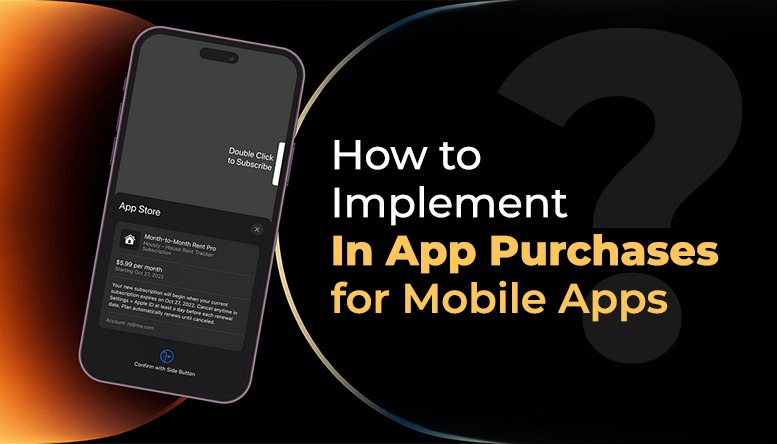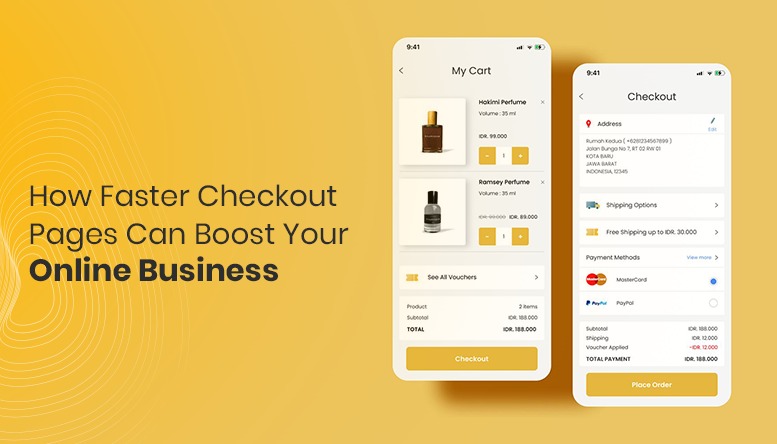How to Implement In App Purchases for Mobile Apps?
- January 2, 2025
- Post By: ABDUL BASITH

All those days are gone when monetization was done simply by one-time purchases and advertising, we are in the modern world where applications are increasingly relied upon. Now customers can simply tap and gain access to exclusive content, or get new upgrades which has entirely changed how developers and businesses make money, this taps into in-app purchases IAPs. If an app for example is made with the Android OS, and users want to account for more experience, that is to make a purchase, developers will have to track user behavior, which facilitates easy buying.
However, easy buying isn’t as easy as it seems as incorporating a single payment button helps to coordinate a lot of things. The behavior of users must be taken into account. For example, users of an app built on Google Play and the Apple App Store are likely to have diverse needs. Developers also have to view the challenging landscape of ever-changing App Store policies. Adapting to ever-changing policies is critical for the avoidance of undesirable regulatory scrutiny.
There are different strategies to effectively use in-app purchases such as targeting a specific demographic and Affiliate marketing. Whenever we are developing a mobile game or a simple subscription-based productivity tool it’s important to know in-depth information about IAPs like ‘How to Implement In App Purchases for Mobile Apps‘. Bearing in mind effective monetization around IAPs one must be recommended to foster long-lasting user connections.
What are In-App Purchases for Mobile App?
Users can purchase goods or services directly within an application using in-app purchases. These purchases fall into one of four categories: subscriptions, auto-renewable subscriptions, consumables, or non-consumables. Consumables are things that can be used once and then bought again, like virtual money or game boosters. Permanent things like new features or content are non-consumables. Auto-renewable subscriptions renew automatically unless cancelled, while subscriptions give access to material or services for a specified period of time.
Increased usage of In-App Purchase
In-app purchase market size has grown surprisingly and the service providers who offer mobile app development in Dubai also increased a lot. The global market was estimated at USD 166.6 billion in 2024 and is estimated to grow with a compound annual growth rate of 14.18% from 2025 to 2033, which reaches USD 582.6 billion.
Integrating in app purchases in Practice
Implementation as per the Platform
iOS Apps:
Apple’s StoreKit framework may be used by developers to control in-app purchases. This framework makes it easier to provide purchased content, handle payments, and retrieve product information. To help developers with the setup process, Apple offers thorough instructions.
Android Apps:
The Google Play Billing Library is the standard mechanism for enabling in-app purchases on Android. It allows handling transactions in a safe way and supports many different kinds of purchases. Complete setup instructions for in-app purchases can be found on Integrate the Google Play Billing Library into your app.
Configuring the Purchase Flow
For users to be satisfied, the purchasing procedure has to be easy and painless. The process must be simple and not ambiguous and give clear information regarding the item to be bought, its cost, and what costs are ongoing. Purchasing is enhanced if the purchase procedure is straightforward and builds up confidence.
Assurance of Quality and Testing
The system must be tested extensively before in-app purchases are introduced to ensure that it works as expected. This includes testing whether the user experience is seamless, information is supplied as promised, and transactions are performed appropriately. Developers can test purchases using sandbox environments offered by Google and Apple, which eliminate the need for actual money transactions.
Security and Compliance
It is necessary to comply with local laws and requirements of the platform. This means implementing secure payment processing, protecting user data, and ensuring the app complies with all relevant rules and regulations. Developers must adhere to specific guidelines established by Google and Apple related to in-app purchases.
Boosting Revenue and User Engagement
The following strategies should be considered to maximize the effectiveness of in-app purchases:
Personalized Offers:
Customize in-app purchase options to suit the preferences and behaviors of particular users. The likelihood of a purchase increases if pertinent features or content are presented through personalization.
Unique Content:
Features or content available only through in-app purchases should be offered. This exclusivity might convince users to purchase premium content.
Limited-Time Discounts:
Time-limited offers may create a sense of urgency in the minds of consumers, compelling them to make a purchase decision on the spot.
Loyalty programs give customers points or rewards for their purchases, which they can redeem later. Loyalty programs can increase lifetime value and user retention.
Also read
In-App Purchase Trends
In-app purchases are an ever-evolving space. The current trends include:
Subscription Models:
Subscription-based business models, through which consumers gain access to services or information in exchange for a regular price, are increasingly gaining popularity. This method can increase user retention and provide developers with a steady revenue stream.
Social Media Connectivity:
In-app purchases may be integrated with social networking sites, allowing users to share their purchases or achievements. This may attract more users and increase revenue.
Enhanced Analytics:
Developers can better target and personalize the in-app purchases by using sophisticated analytics tools for insights into what users are doing.
The use of in-app purchases is one of the best ways to make money off mobile apps. Developers from companies offering reliable app development Dubai has to offer can produce interesting and lucrative user experiences by being aware of the many purchase kinds, following platform rules, and keeping up with emerging trends. As the mobile app industry grows, adopting in-app purchases will be crucial for maintaining and expanding app income streams.
Get A Call back from Our Expert
Need tailored guidance or have specific questions? Simply request a callback, and one of our knowledgeable experts will reach out to you at a time that suits your schedule.
Marketing
Services





